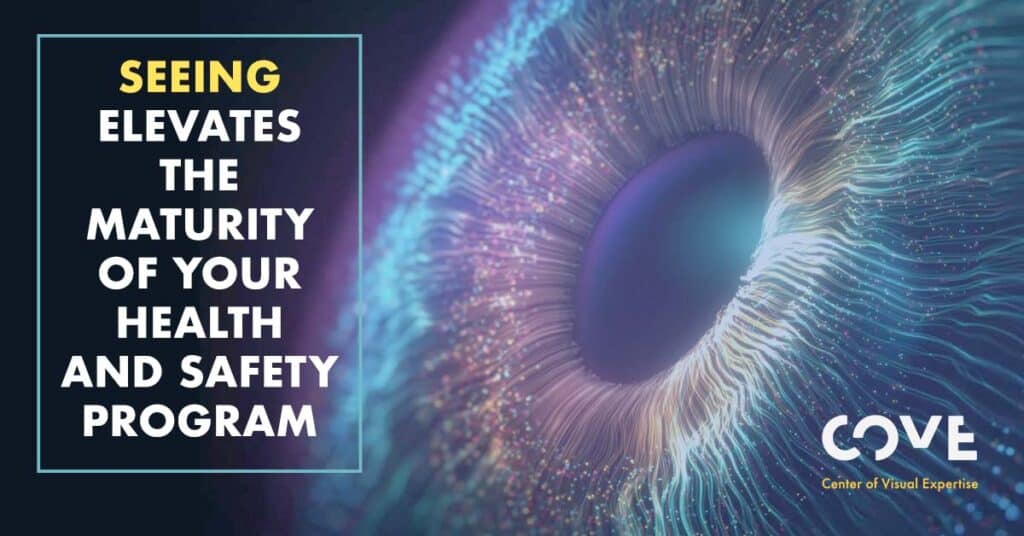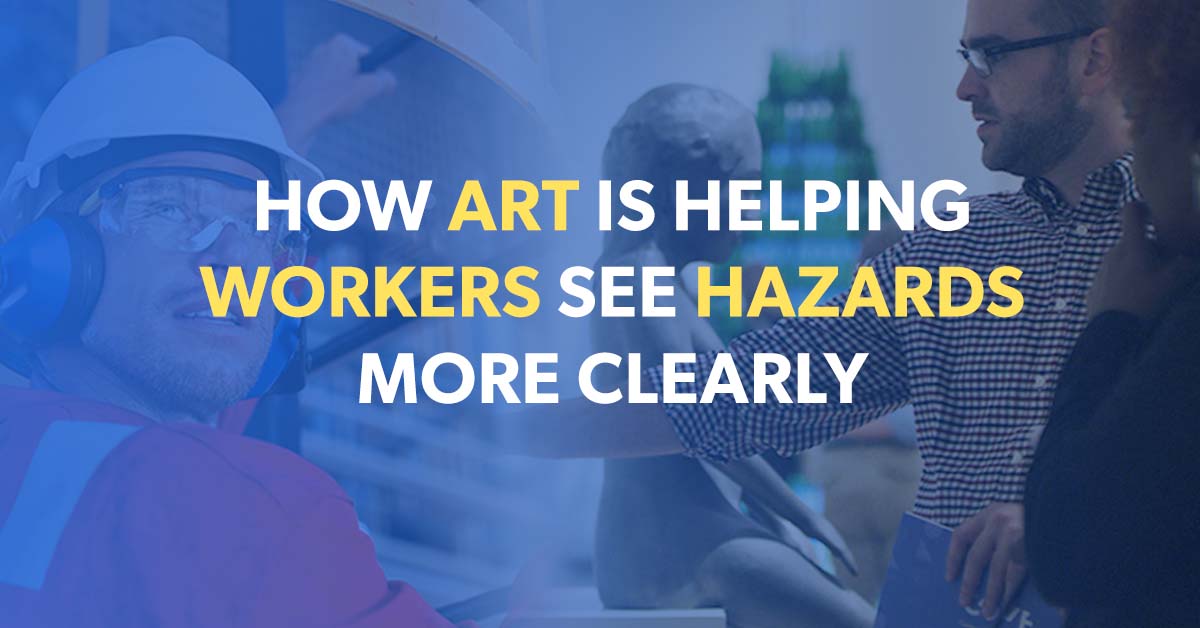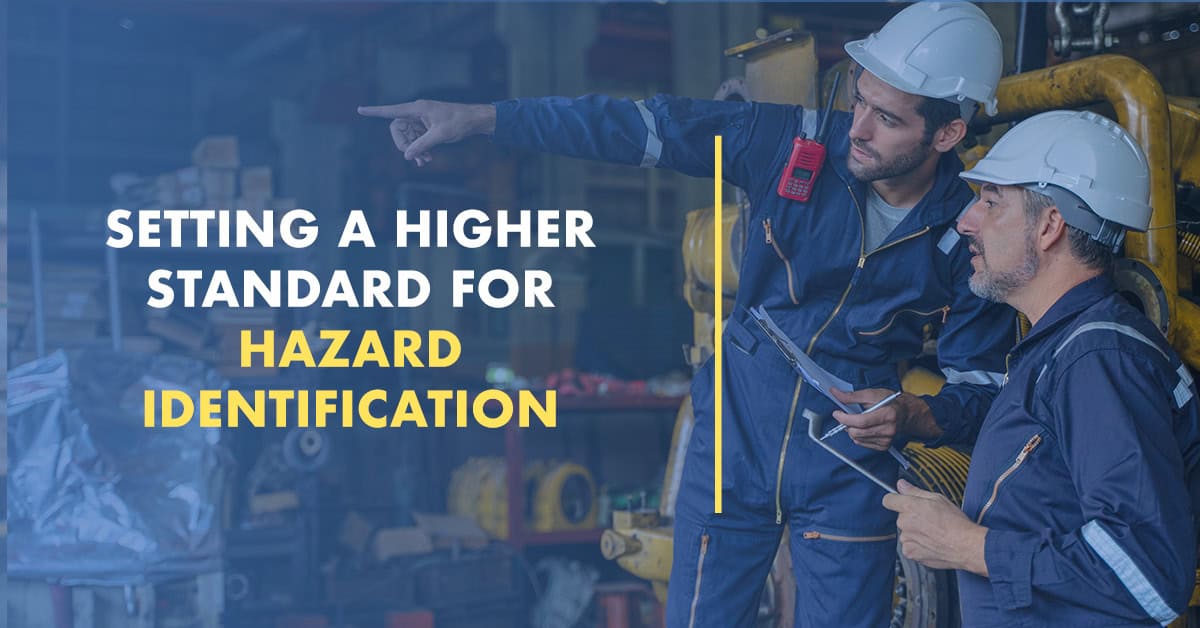The Challenge: Are We Truly “Seeing” Hazards?
What we are talking about is “seeing better.” Specifically, as seeing – visual acuity – relates to improving hazard recognition programs, incident investigations and pre-job analysis.
Think about it. How many workers are trained to see better? Most of us, without the benefit of training, often make assumptions and overlook what’s right in front of us, which often leads to preventable mistakes.
Also, experienced employees sometimes operate on auto-pilot as they frequently repeat a task. In the process they can miss hazards both minor and major. How many times have you taken the same commute to work and remembered little of the journey? Or set your keys down and then couldn’t find them?
In many “less mature” workplaces, classified in ranking systems as “reactionary,” “compliance-focused” or “dependent on rules,” hazard recognition efforts such as hazard hunts can be impromptu, disorganized, rushed, conducted with an element of complacency or taken for granted. Some less mature organizations set goals for hazard identification which become quotas for achievement. Often spikes in the number of hazards identified occur at the end of the reporting period (also known as pencil-whipping) and the quality of what is identified is poor. Plus, the validity of the data is questionable.
The Blind Spots in Hazard Recognition
It doesn’t help efforts that neuroscience and research estimates that as much as 90 percent of what we think we see is actually our brains filling in the blanks based on our expectations, biases, memory and past experiences.
This unintentional gap in our ability to see, combined with ad hoc, rushed exercises to find hazards, creates a safety and health program with blinders on. This same gap can also lead to poorly written hazard identification reports and inadequate communications, which can cause misinterpretations and reduce a worksite’s ability to work in effective teams to mitigate risks.
Misunderstandings, confusion, poor communication and a lack of teamwork are characteristics of safety and health programs at the low end of the maturity curve – operating at stages known as “chaotic,” “aware,” “dependent,” and “emerging.” A willingness to change, to improve to a higher level of sophistication and maturity takes self-reflection, honesty, leadership and initiative.
Visual Literacy: A Critical Skill for Navigating Today’s Fast-Paced Workplace
Many workplaces in the past five years, since the founding of COVE: Center of Visual Expertise in 2018, have taken the initiative to have employees trained in Visual Literacy courses offered by COVE. There is growing awareness that today’s business world is fast-paced, fast-changing and saturated with visual information. Seeing – efficiently and accurately processing what we observe – is more critical than ever.
Visual Literacy teaches employees to slow down, even briefly, look closely with a structured process and discover hazards that may have been missed time and again. This is critical to preventing incidents, near misses/close calls and costly mistakes. And it’s critical to elevating safety and health programs to higher levels of maturity and effectiveness.
Aristotle famously wrote, “The more you know, the more you realize you don’t know.” This is a mature perspective. In the context of workplace safety, initially your confidence is low because you know you’re inexperienced and perhaps lack training. As your experience, knowledge and skills grow (or mature) through training, empowerment, teamwork and repeatedly practicing a specific safety activity such as hazard identification and incident investigations, you “get it” and reach a higher level of mindfulness (expecting the unexpected), cooperating, and continually improving. These are characteristics of more mature safety and health programs.
And those characteristics are among the components of high-performing hazard recognition and risk assessment. Visual Literacy training to better see unsafe conditions doesn’t stop there. Visual Literacy exercises bolster critical thinking, awareness of personal biases and blinders, analysis and interpretation of observations and findings, making risk assessment decisions, solving safety issues and communicating action plans.
The benefits of Visual Literacy is why, of all the essential parts of a safety and health program, accurate and detailed hazard identification and assessment offers the most leverage points to start elevating the maturity and performance level of a program. As taught by COVE, hazard identification and assessment encompasses the core components of OSHA’s voluntary safety and health management guidelines (appearing below in boldface; hazard identification and assessment being one of the six).
Leadership, Worker Engagement, and Visual Literacy
A commitment to devote resources to identifying, assessing and fixing unsafe conditions is not possible without knowledgeable and involved management leadership.
Worker participation is a must; who knows better where and when the next incident may occur, and the hazards causing it? Hazard hunts work best when multiple sets of workers’ eyes are scanning the work environment, and workers are seeing with their brains, not just their eyes. Communication skills are developed to share perceptions, using a common language to describe hazards and what workers have discovered with peers.
Hazard prevention and control is the follow-up to first identifying hazards and assessing their risks. Through analysis, interpretation and use of critical thinking skills, prevention strategies and control solutions are decided and communicated. Communication focuses on the 4 Cs – context (give the big picture); content (give the facts); check understanding; and confirm the next steps.
Education and training cover many safety and health subjects, rules and regulations. Visual Literacy training teaches employees specifically how to deconstruct complex work environments to uncover hazards; improves communication through group discussions, developing that common language for workers; develops teamwork through group exercises; strengthens critical thinking through analysis and interpretation of hazards; reveals biases and potential blind spots that can be barriers to accurate observations; and improves decision-making to develop controls and action steps. The training is very interactive and high energy with participants identifying hazards and sharing information on assessments and hazards that were missed.
COVE enhances program evaluation and improvement by:
- Undertaking a readiness assessment analysis
- Conducting leadership interviews and focus group discussions
- Defining measurement goals and outcomes
- Evaluating implementation issues and barriers
Visual Literacy: A Transformative Approach to Elevating Safety Practices
This is how Visual Literacy training has a ripple effect throughout an organization and provides a highly adaptable and practical framework for improving best practices and elevating the maturity level of safety and health processes. The far-reaching benefits have been realized by a wide range of organizations, including major manufacturing and petrochemical businesses in leading Fortune 500 companies. If you’re interested in learning more about this approach contact COVE today!




